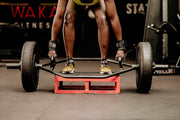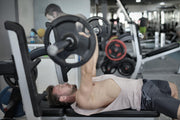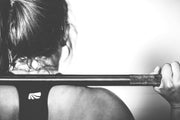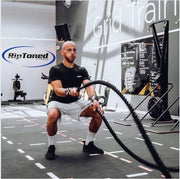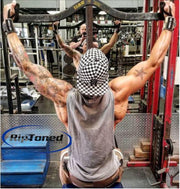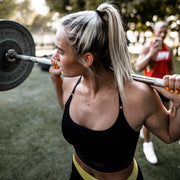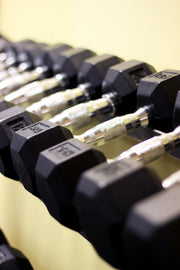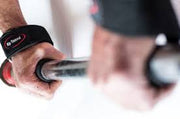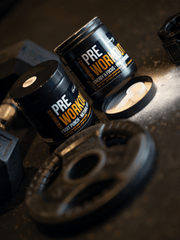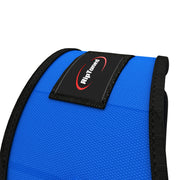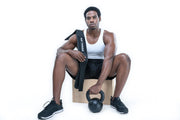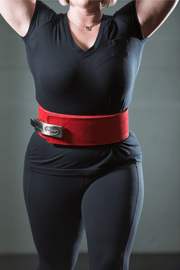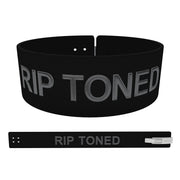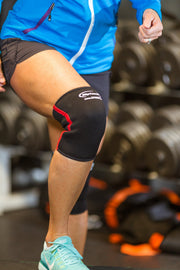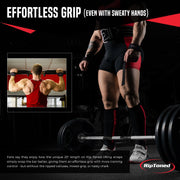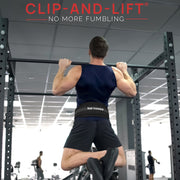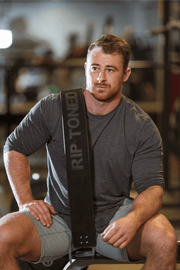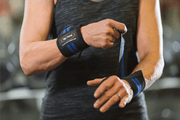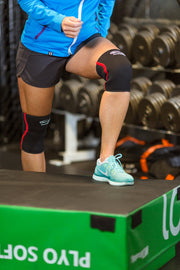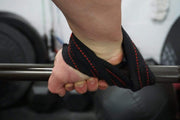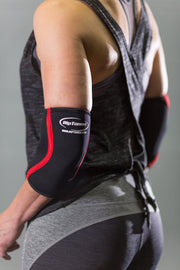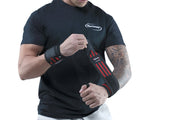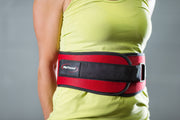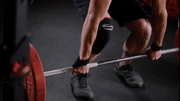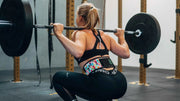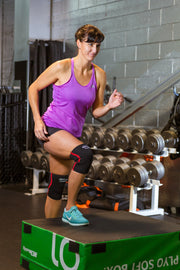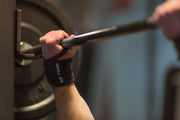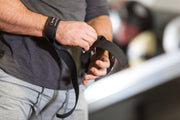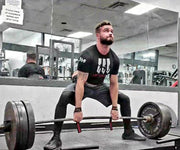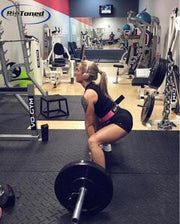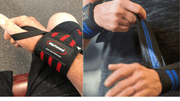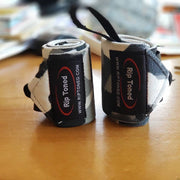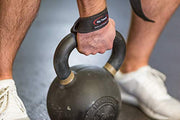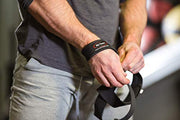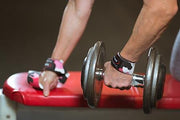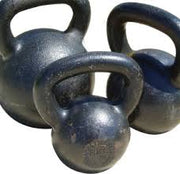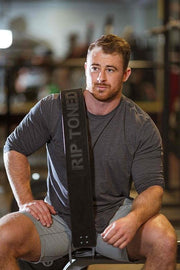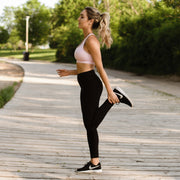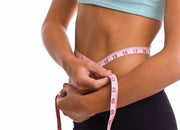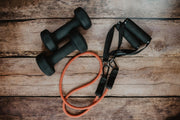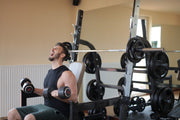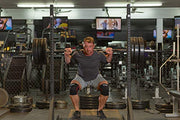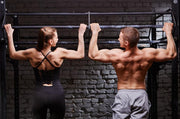Lifting weights is essential for any fitness routine, and the deadlift is one of the most beneficial lifting exercises out there when it comes to building strength and muscle.
Yet while it’s an incredibly effective exercise, it can also be fraught with risks if not done properly — especially for your lower back.
But by using straps for deadlifting you can safely increase your strength while taking pressure off your back.
In this blog post we will discuss how to use straps effectively so that you lift smart, stay safe, and gain maximum results from each rep.
What are Lifting Straps?
The lifting strap is a strong and durable piece of equipment that can be wrapped around your wrists and then around the barbell, providing a secure connection between you and the weight.
They usually have a looped hand grip attached to a long tail which is then wrapped tightly around the barbell.
Lifting straps are made with different materials including leather, nylon, or cotton.
The most common types are the figure 8, single loop, and double loop wrist bone straps.
Also known as deadlift straps, they are designed to give you a better grip on heavy weights and prevent the bar from slipping out of your hands.
They can also serve as support for weak wrists or help improve grip strength.
Why use straps for deadlifting?
There are multiple benefits to using lifting straps for deadlifts.
Firstly, they provide you with a secure grip on the barbell, especially when your hands start to get slippery from sweat or fatigue. This means you can lift heavier weights without the risk of dropping them.
Second, wrist straps also help to reduce strain on your grip and forearms, allowing you to focus on engaging your back muscles during the heavy pulling exercises.
This can be particularly helpful for individuals with smaller dominant hands or weak grip strength.
Lastly, straps can protect your lower back from injury by helping you maintain proper form throughout the lift.
Without the worry of your grip failing, you can keep your back straight and lift with the strength of your legs and glutes.

How to use straps for deadlifting?
Using lifting straps for deadlifts is a simple process, but it’s important to do it correctly in order to get the most benefit.
Follow these steps:
1. Slip one end of the strap through the loop on the other end to create a noose.
The first and most important step is to create the looped right hand grip that will go around your wrist.
Simply slip one end of the strap through the loop on the other end, creating a noose that you can easily slide your hand into.
2. Place the noose around your wrist and pull the tail to snug up the loop around your wrist.
Slide your hand through the noose so that it sits comfortably around your wrist.
Then, take the tail of the strap and tug it snugly around your wrist.
3. Slip your other hand through the second loop on the other strap.
Slide your other hand through the noose so that it sits comfortably around your wrist.
Then, take the tail of the strap and tug it snugly around your wrist.
4. Wrap the tail around the barbell.
Now, place one hand on the bar with the tail of the strap between the bar and your hand. Wrap the remaining tail of the strap around the barbell going under the bar then wrap up and over. Wrap the tail once or twice around the bar but DO NOT overlap the strap tail. .
Snug the strap on your wrist by twisting your hand on the strap similar to turning a motorcycle throttle..
5. Repeat with the other hand.
Repeat these steps with your other hand so that both wrists are snugly connected to the barbell with a lifting strap.
Also, make sure to adjust the strap beneath so that they are not too loose or too tight.
You want them to provide support and a secure grip without cutting off your circulation.
This will create a strong connection between your wrist and the barbell.
6. Lift with proper form.
With your straps in place, stand in front of the barbell with your feet shoulder-width apart and your knees slightly bent.
Then, grip the bar with your hands shoulder-width apart and lift by pushing through your heels and engaging your back muscles.
Make sure to keep your back straight throughout the lift.
By using straps for deadlifting, you can safely and effectively increase your strength while reducing strain on your hands and lower back.
Make sure to always use proper form and adjust the straps as needed to get the most out of your deadlifts.
Tips for using straps effectively
Here are the top tips for using straps effectively during your deadlifts:
-
Use the correct type of straps for your needs. Figure 8 or single loop dangling strap work well for most people, but if you have wrist issues, double loop straps may be a better option.
-
Don’t rely solely on lifting straps. While they can help with grip and support, it’s important to also work on improving your grip strength through full body exercise like farmer’s walks.
-
Practice proper form before using straps. It’s important to have a strong foundation and know how to properly deadlift without straps before adding them into your routine.
-
Don’t use straps for every set. Straps can be a great tool, but it's also important to regularly train without them to maintain grip strength and prevent over-reliance.
-
Replace worn out straps. Lifting straps can wear out over time with regular use, so make sure to replace them when they start to fray or lose their grip.
-
Experiment with different hand positions. Adjusting the placement of your hands on the strap can alter how the weight feels and target different muscles, so don’t be afraid to try different positions.
With these tips in mind, you can effectively use weight lifting straps for deadlifting and take your strength to the next level while staying safe and injury-free. So go ahead and lift smart with straps!
What to look for in deadlifting straps?
When choosing a set of lifting straps for deadlifts, there are a few key things to consider:
-
Material: Choose a material that is comfortable and durable for your needs. Leather straps may be sturdier but can be uncomfortable for some, while nylon or cotton may be more comfortable but not as strong.
-
Length: Make sure the straps are long enough to wrap around your wrists and the barbell securely.
-
Width: Look for wrist straps that are wide enough to distribute weight evenly across your wrist without digging in or cutting off circulation.
-
Grip: Check the grip of the straps before purchasing. Some materials may be more prone to slipping, which defeats the purpose of using straps.
-
Quality: Invest in a good quality pair of straps that will last you a long time and can withstand heavy weights.
-
Brand: Do your research on different brands and read reviews to find the best straps for your specific needs and budget.
By considering these factors, you can choose the right set of lifting straps for deadlifts and enjoy all the benefits they have to offer.
FAQs
How much do straps add to a deadlift?
The amount of weight straps add to a deadlift can vary depending on the individual and the type of straps being used. However, on average, they can add around 10-20% to your lift.
Can I use lifting straps for other exercises?
Yes, lifting wrist strap can be used for other exercises such as lifts such as pull-ups, barbell rows, and shrugs. However, it’s important to use them in moderation and also train without them to maintain grip strength.
Are lifting straps cheating?
While some may argue that using lifting hanging strap is cheating, they can actually be beneficial for those who struggle with grip strength or have hand injuries. As long as proper form is maintained, using cotton lifting straps, can help increase overall strength and prevent injury. So, they can be seen as a useful tool rather than cheating.
Conclusion
To sum up, straps can be an invaluable and necessary asset in your deadlifting routine. They help you lift more weight with comfort and safety, as well as improve your lifting technique which is a must for building strength.
Taking into consideration each of the points mentioned above – training your grip strength, warm-up exercises and wearing straps correctly while maintaining proper form – you will reduce injuries, build strength and increase the progress in your training.
Whatever route you decide to take when it comes to using straps for deadlifts, make sure that it’s done safely and strategically so that the desired outcomes are achieved. So get those weightlifting straps ready and start working on making gains today.
Click here to check out Rip Toned's various lifting straps colors.


